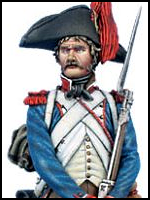Tue Jun 2, 2020 4:58 pm
can't register there
Sat Oct 10, 2020 1:45 pm
Thu Oct 15, 2020 12:21 pm
Sun Dec 13, 2020 3:44 am
Sun Jan 10, 2021 5:14 am
register for PBEM games. I'm sure it is on my end, but any insight
greatly appreciated.
Sun Jul 18, 2021 12:32 am
Fri Jul 30, 2021 7:05 am
Mon Aug 9, 2021 5:42 am
Mon Aug 9, 2021 11:22 am
Tue Aug 10, 2021 10:26 pm
Thu Aug 12, 2021 12:37 am
Sun Sep 5, 2021 5:21 pm
too. See you in slack..
Mon Sep 6, 2021 6:45 am
slack.
Sun Sep 12, 2021 7:07 am
Thu Sep 16, 2021 11:06 pm
email.. See you there. ^^
Sun Oct 31, 2021 11:43 pm
Wed Nov 10, 2021 9:48 am
Sat Nov 20, 2021 7:22 am
emails..
Sat Nov 20, 2021 7:24 am
Sun Dec 5, 2021 5:04 pm
Mon Dec 6, 2021 11:44 am
club..
Mon Dec 6, 2021 11:47 am
Tue Dec 7, 2021 7:42 pm
let how to do it?
Tue Dec 7, 2021 7:43 pm
Tue Dec 7, 2021 7:43 pm
Thu Dec 9, 2021 9:51 am
email..
Fri Dec 10, 2021 10:50 pm
email..
Mon Dec 13, 2021 9:36 am
email..
Tue Dec 28, 2021 11:36 pm
email..
Sat Jan 8, 2022 9:22 am
Tue Jan 11, 2022 8:19 pm
Wed Jan 12, 2022 4:04 am
slack.. hf.
Wed Jan 12, 2022 4:04 am
email..
Sat Feb 5, 2022 12:19 am
email..
Wed Feb 23, 2022 1:38 am
email..
Mon Mar 21, 2022 3:09 pm
Mon Mar 21, 2022 6:16 pm
Tue Mar 22, 2022 4:17 am
Thu Mar 24, 2022 4:59 pm
Fri Mar 25, 2022 1:47 am
email..
Wed Apr 13, 2022 2:17 am
email..
Mon Apr 18, 2022 12:34 pm
Tue May 17, 2022 9:02 am
Fri Jun 3, 2022 9:26 am
Sat Jun 4, 2022 2:14 am
Thu Jun 9, 2022 7:31 pm
Fri Jun 10, 2022 12:06 am
Fri Nov 11, 2022 8:12 am
Sat Nov 12, 2022 4:04 am
Sat Dec 3, 2022 2:28 pm
Sun Dec 4, 2022 2:03 am
Tue Dec 20, 2022 2:53 pm
Tue Dec 20, 2022 10:33 pm
Thu Dec 22, 2022 3:09 pm
there..
Thu Dec 22, 2022 9:45 pm
Fri Jan 20, 2023 2:33 am
partake of the community
Sun Jan 22, 2023 8:56 pm
Mon Jan 23, 2023 1:06 pm
Sun Apr 2, 2023 12:32 pm
Tue May 2, 2023 1:38 am
Tue May 30, 2023 12:59 am
Fri Jun 2, 2023 3:05 pm
invite you to FOG2-PS room there..
Sat Jun 3, 2023 1:55 am
Mon Jun 12, 2023 2:33 am
Thu Jun 22, 2023 3:55 am
Fri Jun 23, 2023 9:46 am
Sat Jul 8, 2023 1:20 am
Fri Sep 1, 2023 3:19 am
Tue Nov 7, 2023 2:47 pm
Tue Nov 7, 2023 2:47 pm
Sat Nov 11, 2023 4:32 pm
Sat Nov 11, 2023 4:32 pm
Sat Nov 11, 2023 4:33 pm
Sat Nov 11, 2023 4:33 pm
well.
Tue Nov 14, 2023 2:09 pm
Sat Jan 20, 2024 8:42 pm
playing AGEOD's Civil War II
Mon Apr 22, 2024 10:36 pm
Sat Apr 27, 2024 1:26 am





























